
Over the last 18 months, my family has doubled down on a mostly vegetarian, part-time vegan diet. We eat meat only once or twice a month, usually on holidays or special occasions. Same goes for desserts, usually on major holidays or birthdays.
Since my wife doesn’t like eggs, which is one of the best affordable superfoods, we eat a lot of oatmeal (boiled and baked), beans and rice, veggie pastas, lentils, peanuts, mixed nuts, hummus, big green salads, popcorn, oils instead butter, yogurt, macaroni and cheese, and plain ole carrots. We eat fruits in moderation, usually bananas, apples, and whatever’s in season.
Since becoming mostly vegan, I have never felt better. But I’ve also learned that eating healthy doesn’t have to be bland or expensive. In fact, I think we spend less on home cooked meals now than we did before, which really helps since the cost of food has skyrocketed over the last few years.
Either way, I love food more than ever and it feels great to feel better while still enjoying it.
See also: 26 secrets to eating healthy on a budget

While recording my debut album, I permanently damaged my inner ears. That’s because I listened to my headphones at volume 8-9 for four straight months. Every day. My ears have been ringing ever since.
Near the end of the recording process, the high pitched “tinging” started. I had also started playing in a live band then but wore ear plugs without realizing that I was letting the problem in the backdoor at the same time.
I read up on the ringing, and after speaking with two permanent “patients,” it was obvious I was suffering from either temporary or permanent tinnitus (pronounced tin-uh-tis). Time was the only way to tell which version I had. All the medical literature says if the ringing stops after 2-4 weeks, the ear cells were able to heal themselves and you’re good to go. If they don’t, the ringing will never go away, according to the latest research. Mine never did.
Obviously, permanent tinnitus, especially in both ears, is an incessant annoyance. But I’ve adapted well. And I’m grateful my ears alerted me to the issue before I was made deaf by music, as the tragic but still hopeful Sound of Metal movie so beautiful demonstrates.
What’s more, I haven’t suffered any noticeable hearing loss beyond maybe 5-10% clarity. I can still hear the soft breathing of my wife lying in bed next to me or even distant sounds. Although the ringing hasn’t gone away, my hearing remains largely intact.
There’s a very specific reason for that. The ringing is by design! The way it was explained to me, ringing ears are like the hissing you hear when turning speakers up real loud or on a radio while changing the station in search of something new. Similarly, ear cells change their frequencies, if you will, to make up for the loss of damaged cells. The living cells actually re-tune themselves (or ring) in an effort to listen more acutely with the remaining cells at their disposal. Magic I tell ya!
While I wish I never harmed my ears like I did, I often feel gratitude whenever I notice the ringing. It’s proof that my body and maker (be that God or evolutionary biology) care for me more than I care for myself sometimes. Isn’t that comforting?
TL;DR: Don’t blow out your ears, wear protection, and be grateful for how the human body adapts to survive.

Wikimedia Commons
One of my goals in life is to become a centenarian, someone over 100 years of age. A few years ago, a team of researchers identified four areas that had the highest number of centenarians per capita in the world. They studied these people, wrote a book about them, then distilled their similar lifestyles down to a set of consistent life-giving habits.
And by life giving, I really mean death halting. Since there’s no brake on death, the best you can do is ease off the accelerator. With my added commentary, here are eight ways to do just that, as compiled by author Dan Buettner:
- Find a physical activity you enjoy and keep doing it. Do it for as long as you enjoy it. If and when you tire of that activity, find something else that pleases you. For example, you could start jogging, and if that becomes a bore, move to biking. Then swimming. Then Pilates. Then kickboxing. Then underwater basket weaving. Whatever it is, be sure to do it at least three times a week, moreso for idle or cubicle people. (In my case, since I sit at a desk and work from home, I have to move a lot more than most people to achieve the optimal amount of fitness.)
- Stop eating when you’re no longer hungry, as opposed to being full. There’s a difference. About 20% less food per meal, in fact. In short, this is the best known way to eat less. Stop when satisfied instead of stuffing yourself. Continue reading…

Sixteen years ago, I was in the worst physical and mental shape of my life. I was a work-a-holic, Internet addict who never exercised and mostly ate junk food. When the food was healthy, such as my wife’s home-cooked meals, I always ate 2-3 plates.
The next year, I lost a lot of weight, abandoned narcissism, disconnected, and started living large on low-caloric technology. I even wrote a best-selling book about it.
In the proceeding years, I maintained that balance. But I was still 5-10 pounds more than my doctor wanted after my back surgery. “The lighter you are, the longer your back will last,” he said.
This year, I finally shed those last 10 pounds, plus an extra five for insurance (because I quickly gain five pounds sometimes, especially on vacation). That way I’m never over my target weight, which makes me feel good about how I’m treating my back and extending my physical health.
I’m not sharing this to sell you anything. In fact, my mostly vegetarian diet is free of charge and basically this: eat real food, mostly plants, not too much, and only dessert on special occasions. On top of that, I rigorously exercise for 21 minutes each weekday and play soccer three times a week.
Why, then, would I hurl something so superficial onto the internet? Because people can change. Maybe you don’t need any changes. But most of us do. I’m grateful for a lifetime of change where each of us can learn and grow at or own pace and by our own free will and choice.
To be fair, life was still beautiful all those years ago. And I was more than the sum of my weight and mental compulsions. But I’m grateful to have achieved peak health this year and hope to inspire others to do the same.
If I can do it over 16 years, anyone can.
 After recently learning that a family member was suffering from an eating disorder, I read Intuitive Eating, aka “The Gold Standard For a Healthy Relationship with Food.” I really appreciated the no-nonsense advice and wanted to summarize its 10, medically backed strategies for a sustainable diet:
After recently learning that a family member was suffering from an eating disorder, I read Intuitive Eating, aka “The Gold Standard For a Healthy Relationship with Food.” I really appreciated the no-nonsense advice and wanted to summarize its 10, medically backed strategies for a sustainable diet:
- Reject dieting (no counting calories)
- Honor hunger (it knows the right amount)
- Make peace with food (give yourself unconditional permission to eat)
- Challenge the food police (ie “protein is the best food group”)
- Feel your fullness (listen and ask yourself if you are comfortably full)
- Discover the satisfaction of eating (which naturally causes us to eat less)
- Cope with your feelings without using food (stay away from food until feeling is managed)
- Respect your body (get rid of scale, don’t be overly critical about its shape)
- Exercise: feel the difference (focus on how you feel working out, not calorie burning)
- Honor your health with gentle nutrition (make food choices that make you feel well—it’s what you eat over time that matters.)
Brilliant!
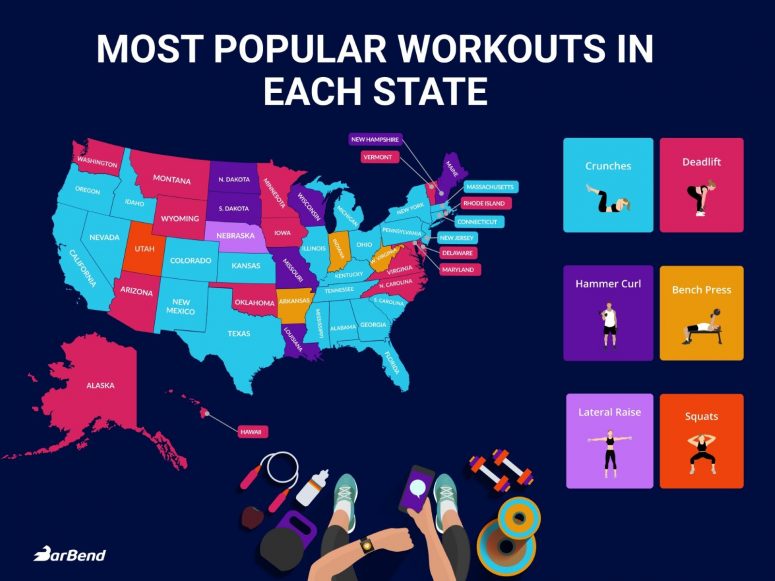
Crunches are the most popular exercise in America, according to a new study by Bar Bend. The study analyzed Google search data to uncover the most popular fitness moves in all 50 states. This is what they found:
- Crunches. Out of all the states’ favorite exercises, crunches are the most popular. With 23 out of 50 states searching for it the most (including New York, California and Florida), the crunch is one of the best ways to train the abdominal muscles. Other than strengthening the core, this type of exercise dramatically improves the posture and the mobility and flexibility of the body.
- Deadlift. Deadlift is one of the most loved (and hated) power lifting exercise by gym-enthusiasts. With 16 out of 50 states searching for it the most (including Virginia, Minnesota and Hawaii), deadlift is the second most popular workout across the country. Deadlifts can help reducing lower back pain and improving core strength.
- Hammer curl. With 6 out of 50 states searching for hammer curl exercises the most (including Missouri, New Hampshire and North and South Dakota), hammer curl is the third most popular exercise in the US. Other than increasing biceps strength, this exercise boosts wrist strength and refines muscle endurance.
- Bench press. Bench press is the fourth most popular exercise across the states, with three out of 50 countries searching for it online (Indiana, Arkansas and West Virginia). Despite being a very good exercise for increasing general upper-body strength, the bench press can be replaced by regular gym goers wanting to work the same same muscles with barbell floor or overhead press, push-ups, or dumbbell bench press.
- Squat. The squat is the most popular exercise only in Utah, with a total average search volume of 5,400 searches per month. Other than improving posture, strengthening core and leg muscles, and defining glutes, squats also prevent knee and ankle injuries.
- Lateral raise. Finally, the lateral raise is the most popular exercise in the state of Nebraska, according to the study. Lateral raises help strengthening the shoulder muscles and improving the general upper body strength.

Frankenstein back with 28 staples (credit: Lindsey Snow)
Life isn’t fair.
I was born with an 80 year-old back. Not exactly 80, but old. It first broke when I was 29. After surgery, it worked again, but only for another six years. It teetered and failed again late this summer in the same spot — a re-ruptured L4/5 disc. The thing was so decrepit, my surgeon had to remove the remains and fuse my spine.
Now I’m resigned to a life of low impact and light lifting. I can’t even hold my youngest brown-eyed boy in his final months of baby-dom, let alone lift a gallon of milk for a month. I can’t return to full activity for six months until the vertebrae fully fuse. And after that, I’m advised to give up running, basketball, soccer, and maybe wake boarding or else.
It sucks.
But it’s not all bad. In fact, I’ve got a heck of a lot to look forward to—a lot more to live for. While having my body deteriorate ahead of schedule and the long recovery are both humbling, I also feel inspired by the experience. Here are 10 things I learned post surgery: Continue reading…

creative commons
Craig Weiler has the answer:
You have one set of teeth, one set of knees, one set of lungs and one back. If you don’t take care of them, you can’t re-boot. You can get knee replacement surgery and you can get your teeth capped and wear dentures, or get new lungs, but it’s not the same as your originals. The back is much more tricky and if you damage it enough you’re never coming back from it.
You have one set of hands and feet. They are irreplaceable as is your brain. So if you damage them you’re never coming back from it.
Your body, in other words, is a one-off. You will never have another one as long as you live. If you start taking good care of it and you’re mindful in your 20’s, you’ll be far healthier and happier in your 50’s and beyond.”

Courtesy Shutterstock
Working long hours is killing hundreds of thousands of people a year, according to the World Health Organization.
In a new study, researchers found that people working 55 hours or more a week are 35% more likely to suffer a stroke and 17% more likely to die of heart disease compared to people putting in 35 to 40 hours a week. That amounts to about 750,000 people a year across the world — and that was before the pandemic hit and rejiggered work-life balance struggles.
The evidence keeps mounting.
 In January, my wife bought this trendy gallon water bottle and has finished it nearly everyday since. Not to be outdone, I decided to join her in the daily gallon water challenge.
In January, my wife bought this trendy gallon water bottle and has finished it nearly everyday since. Not to be outdone, I decided to join her in the daily gallon water challenge.
Before this, I was already drinking a lot more water than most—around 11 cups a day (or 2/3 a gallon) over the last several years. At 6’1″ and 200 pounds, this amount felt great. But I wondered what five more cups per day might do for me.
Turns out a lot. I’ve lost a little weight, satiated my appetite more than usual, am never thirsty, and my skin feels even better in the cold desert of Utah where I live. I’ve also peed a lot more than usual, but that’s a minor annoyance that’s well worth the trade-off.
Pro tip: To avoid waking at night to urinate, I finish my gallon by 2pm in the afternoon and don’t drink anything after that. The more you know!

Courtesy Shutterstock
I’ve never been scared of COVID.
I’m still young and in good health, which played a big part in me not feeling vulnerable, since the virus tends to kill older and chronically ill people. But even those groups are both enjoying well over a 99% recovery rate now, according to the latest numbers. Whereas before coronavirus was hospitalizing and killing around 5% of those it infected, those numbers have dropped below 1%. Neither 5% or 1% scares me.
Truth be told, I’ve always sided with Sweden’s controversial, no masks, and little social distancing approach, which allowed schools, businesses, and small gatherings to remain open. That approach is increasingly looking like a more than suitable one that benefited Sweden’s economy without the massive death that the rest of the world predicted they would have.
Furthermore, in a recent report entitled The Coronavirus Is Never Going Away, The Atlantic convincingly argues that COVID will likely become a common cold or seasonal flu strain, like other coronavirus have before it. “I think this virus is with us to the future,” said one vaccine researcher at Johns Hopkins. “But so is influenza with us, and for the most part, flu doesn’t shut down our societies. We manage it.”
If that ends up being the case, I’m not sure how soon we can all remove the masks and start “social proximiting.” But I sure hope it’s sooner than later. As one commenter recently said, “Sitting at home shaking with fear while pointing the critical finger is no life.”

Courtesy Shutterstock
More than half of Americans think crime is getting worse, according to FiveThirtyEight. Truth is: this majority is wrong. Both property and violent crimes have decreased by nearly 75% over the last three decades.
On top of that, everything else is down too, according to Factfulness. Death, poverty, illness, disease—everything. And we can confidently say that without fear of things getting worse if we admit that. Humans get better. Period. We progress and we still will.
Problem is, fear has a nasty way of impeding our progress. For example, “The trouble is that fear about crime isn’t rational, and it’s hard to convince people to think differently about a problem that they don’t experience on a day-to-day basis anyway,” reports FiveThirtyEight. “’You can tell Americans that the crime rate is lower today than it was in the 1990s, but it won’t feel real to them,’ said Kevin Wozniak, a sociologist at the University of Massachusetts Boston. ‘That is, unless politicians stop drumming up the crime rate and people stop hearing about murder every night on the local news.'”
This is especially compounded in middle class and rich countries like America. These types of societies fear more irrational things than others, because they have the luxury of worrying about a lot more stupid things than basic necessities and average wants and needs.
So they worry. They overstate their fears. Then they become victims of that fear.
Coincidentally, we see a lot of similar fears taking hold today about public health. Both are valid concerns, mind you. But I believe both are equally overstated and misunderstood.
 Days before America went on coronavirus quarantine this spring, Time Magazine published an excellent report on why Asian countries wear masks and Americans (up until that point) didn’t. The reason? There is little scientific evidence showing that masks actually work in preventing non-airborn illness such as the flu, common cold, and coronavirus from spreading. Earlier this year, the New York Times published a similar report showing dubious benefits, if any.
Days before America went on coronavirus quarantine this spring, Time Magazine published an excellent report on why Asian countries wear masks and Americans (up until that point) didn’t. The reason? There is little scientific evidence showing that masks actually work in preventing non-airborn illness such as the flu, common cold, and coronavirus from spreading. Earlier this year, the New York Times published a similar report showing dubious benefits, if any.
In light of that lack of evidence after decades of research, American health officials basically took the stance of, “If it ain’t proven to work, don’t do it.” They kept this stance until early April, when the CDC and WHO superstitiously started recommended them. Not because there were suddenly lots of scientific studies showing that masks actually work (there weren’t). Rather, when dealing with something that’s new and mysterious, humans understandably resort to “doesn’t hurt to try” approaches.
Only in this case, it does hurt to try. Here’s why well-intentioned but “false sense of security” health masks aren’t worth the hassle in the fight against coronavirus: Continue reading…

Photo: Blake Snow
I recently started reading The Nature Fix by Florence Williams.
In her introduction, Williams reports that most empirical evidence suggests there are four ingredients for happiness, namely feeling enmeshed in a community of healthy friendships (i.e. “it takes a village”), having your basic survival needs met, keeping your brain stimulated and engaged, and working for something that’s larger than yourself.
There’s increasing evidence, however, for a fifth ingredient, Williams argues: Regular outdoors, getting outside, or “forest bathing.”
I certainly won’t argue with any of those. Surrounding myself with healthy relationships, having my basic needs met, keeping my brain stimulated through learning and interesting work, volunteering, and staying outdoors has done the trick for me.
Easier said than done. But when you break it down like that, it also seems highly attainable.

Courtesy Shutterstock
Over the last week, the world radically entered a health crisis mode. What was normal just a few days ago is no longer the case. In addition to school, office, sports, and recreation closures, many restaurants are even closing in some parts of the country. That can be a scary thing.
But it’s not all scary. We can still play music, congregate in tight groups, go outside, and carry on as best as possible. To help you do that, here are eight proven ways to overcome uncertainty, regardless of the source: Continue reading…
 This week many world and local leaders hit the nuclear response button to a pervasive, flu-like virus that kills a lot of old people and around 10 times the number as the common flu, according to the latest figures.
This week many world and local leaders hit the nuclear response button to a pervasive, flu-like virus that kills a lot of old people and around 10 times the number as the common flu, according to the latest figures.
Dubbed “the coronavirus” (covid-19 to be scientific), roughly 92% of all infected age groups survive and fully recover. For those under 60, the survival rate jumps to over 99%. For those in their 70s and 80s, or those with respiratory or smoking conditions, the survival rate drops to 96% and 92% respectively. For comparison, the flu kills .1% of those infected on average.
Understandably, those “much higher than normal odds” are a scary concern for senior citizens like my parents who venture out in public. But depending on how optimistic you are, a 92-99.5% survival rate doesn’t warrant shutting down society for, as one megacity in China has done and the entire countries of Italy, France, Spain (and surely more) have already done.
In my opinion, those reactions are the nuclear option. A “flattening the curve” of infections at all costs option. In America, we’ve so far taken a hybrid approach, which is still an overreaction, in my risk-taking opinion. Although citizens are free to move about and go to a decreasing number of open stores (because there isn’t enough foot traffic to keep them all open), every public event, many businesses, most churches, and an increasing number of schools are closed to meetings.
To make matters worse, public officials haven’t explained an endgame or exit strategy for the first wave of 15-30 day closures. Because they don’t have one. This only causes more panic and uncertainty. Continue reading…

Courtesy Shutterstock
This is a fascinating report by Time on cultural truth, incomplete science, better than nothing protection, and the cost of social distancing. “People look at me funny because I don’t wear a mask,” Chan says. “But I think the only thing that’s laughable is everyone buying into this excessive fear. People are being led by emotion, not science.”
PS—I’m grateful for public health officials and infectious disease doctors. Like vaccines, I believe they have our best interests in mind. What I’m not comfortable with is a nuclear social distancing response in reaction to a serious but still not that deadly virus (aka the vast majority of those infected by coronavirus live). It’s unfair to trump out a “flatten the curve at all costs” approach to something that doesn’t deserve such a dramatic response. Just because we could “flatten the curve” of 61,000 flu deaths last year with nuclear social distancing doesn’t mean we should. That’s why people are upset, scared, and confused. We can’t agree on the price to pay!
 The following was written by Dr. Abdu Sharkawy after a global wave of premature event cancelations, travel restrictions, and economic collapse:
The following was written by Dr. Abdu Sharkawy after a global wave of premature event cancelations, travel restrictions, and economic collapse:
I’m a doctor and an Infectious Diseases Specialist. I’ve been at this for more than 20 years seeing sick patients on a daily basis. I have worked in inner city hospitals and in the poorest slums of Africa. HIV-AIDS, Hepatitis,TB, SARS, Measles, Shingles, Whooping cough, Diphtheria…there is little I haven’t been exposed to in my profession. And with notable exception of SARS, very little has left me feeling vulnerable, overwhelmed or downright scared.
I am not scared of Covid-19. I am concerned about the implications of a novel infectious agent that has spread the world over and continues to find new footholds in different soil. I am rightly concerned for the welfare of those who are elderly, in frail health or disenfranchised who stand to suffer mostly, and disproportionately, at the hands of this new scourge. But I am not scared of Covid-19. Continue reading…

My sister-in-law challenged our family to a plank-off recently. Person who could plank the longest wins. “I don’t know,” I said. “I can’t stomach those things for 30 seconds.”
Or so I told myself.
Before continuing my story, a quick note: Like any inherently lazy human, there are a lot of exercises I hate doing. But planks are the worst—invented by Satan himself. They’re right up there with Turkish getups, mountain climbers, and wall sits as most uncomfortable for me. So I wasn’t enthused to participate.
“I’m in!” my wife said. My daughter, too, was excited to compete. “I’ll try,” I relented, offending Jedi Masters everywhere. Continue reading…
 Not only is 2020 the start of a new year, it’s the start of a new “roaring twenties” (hopefully one that doesn’t end in another Great Depression). That’s exciting–the new decade part, not depression.
Not only is 2020 the start of a new year, it’s the start of a new “roaring twenties” (hopefully one that doesn’t end in another Great Depression). That’s exciting–the new decade part, not depression.
Regardless of what greater society elects to do, I’m here to tell you that individual people can change. Granted, a lot of people try and fail to change, especially in January. But that doesn’t mean the rest of us are incapable. It just means change is hard.
It’s easier, however, if we make small, daily choices that can have a big impact on our future prosperity, health, and fulfillment. For example, here are 10 simple things you can do on a daily basis to improve your future and slay the next decade of your life. Continue reading…

Grant Wood/Wikimedia Commons
As a leading psychologist, Shawn Achor has spent two decades studying happiness. His bona fides include award-winning researcher and teacher at Harvard, best-selling author on positivity, and popular TED lecturer.
So when he speaks you should listen. For instance, Achor asserts our circumstances — including age, race, gender, social status, and wealth — only account for 10% of our happiness. The rest is determined by our genetic baseline for happiness (i.e. optimist vs pessimist) and our individual intentions, including the way we spend our time and the things we ponder.
Obviously, happiness means different things to different people. But there are plenty of standardized things we can do to boost our chances of finding it. Somethings such as knowing oneself, learning how to forgive, and balancing the personal, professional, and social demands on our time can be life-long pursuits.
But other happiness-building attributes are quite easy, Achor argues. In order from least difficult to most difficult, they are as follows: Continue reading…
Below is an edited summary of Eric Barker’s excellent list written for TIME Magazine:
 Get happy yourself. How happy you are dramatically affects how happy and successful your kids are. So plan time each week to nurture your own relationships and hobbies.
Get happy yourself. How happy you are dramatically affects how happy and successful your kids are. So plan time each week to nurture your own relationships and hobbies.- Teach kids to build relationships. Encourage them to invest in relationships and perform small acts of kindness to build empathy.
- Expect effort, not perfection. Banging the achievement drum messes kids up. The research is very consistent: praise effort, not natural ability. Continue reading…

Dumfounded by the beauty of the Italian Alps
Reporting for Paste Magazine…

Yours truly surfing Lake Powell
Someone recently asked me what I’m excited about. “Oh, I don’t know,” I lied. Not because I didn’t have an answer. I just hadn’t articulated it yet.
After further deliberation, here is my answer: Continue reading…
In the early 1900s, bananas may have been named the world’s first superfood. At the time, even The American Medical Association praised them for being “sealed by nature in practically germ-proof packages.”*
Although still one of the most nutrient-dense foods you can eat, bananas are no longer consider a superfood. (I eat one every morning, however, as they’re always in season). Trendy things like acai berries, green tea, quinoa, kale and other manufactured foods are. It’s gotten so out of hand, that the FDA issued a warning letter recently about falsely advertised “superfoods.” As of 2007, the European Union has prohibited food makers from using the term “superfood.”
So how can we distinguish marketing hype from science when seeking out nutrient-rich foods? Highbrow did just that recently. This is what they came up with—the top 10 superfoods backed by science. Continue reading…
I, Blake Snow, wrote this for my children, but figured you might enjoy it too. According to science, the following habits lead to a healthy, happy, and sustainable lifestyle: Continue reading…

Courtesy Miramax
Smart people don’t make better decisions because they’re smart. They make better decisions, research shows, because they habitually do the following:
1. Remove unimportant decisions. If a decision doesn’t have an impact on your work, relationships, or spirit, then remove it from consideration. For example, many CEOs, heads of states, or creative people wear the same thing every day. Steve Jobs wore blue jeans and a black turtleneck everyday. Mark Zuckerberg only wears blue jeans and a gray t-shirt. Similarly, the leader of the free world only wears blue or gray suits, “Because I have too many other decisions to make,” the president recently told Vanity Fair. “I’m trying to pare down decisions,” he added. “I don’t want to make decisions about what I’m eating or wearing.”
For those of us without a personal chef, deciding what kinds of food to eat is a very important decision. But removing or outsourcing unimportant decisions to other people helps us make more meaningful decisions. One of the ways I achieve this is by removing TV from my life, limiting the number of sportsball games I watch, and restricting the number of news sources I read to only three per day. Doing so introduces more social encounters, analog experiences, and thought-provoking literature into my life, which make me a better writer (instead of regurgitator). Continue reading…
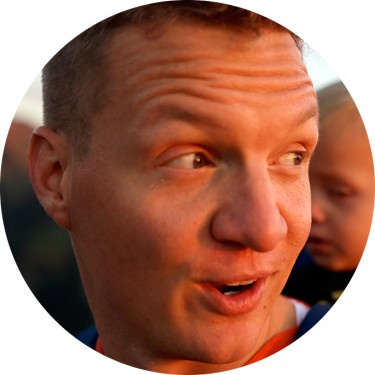 I’m grateful to my parents for teaching me basic personal hygiene. Things like regular bathing, brushing teeth, grooming, laundry, and hand-washing.
I’m grateful to my parents for teaching me basic personal hygiene. Things like regular bathing, brushing teeth, grooming, laundry, and hand-washing.
But in recent years, I’ve picked up new habits that have improved my life. My parents probably tried to teach me some of them. Others I discovered on my own or with the help of my wife.
Whatever the catalyst, all of the below have greatly improved my life:
- Relentless sun-screening. Several summers ago, I had an epiphany. I don’t think I’ve ever heard someone say, “I wish I hadn’t used so much sun screen.” Upon realizing this, I challenged myself to not get burned that summer, despite getting burned every prior summer through negligence (I’m a pasty caucasian). To beat the sun’s harmful rays, I applied sunscreen whenever I knew I would be exposed to direct sunlight for longer than 30-60 minutes. When swimming, for example, I reapplied often, several times an afternoon. Three months later, I conquered without getting burned once. And to my vain surprise, I was tanner than I’d ever been. Since that successful experiment, I haven’t been burned again, at least my skin hasn’t turned lobster, itched, or peeled. So remember: sunscreen only filters the sun’s harmful rays. It doesn’t block the good stuff like vitamin D and sun kissed skin. Continue reading…

Photo: Lindsey Snow
The young man was hiding something. Perhaps unknowingly, but he was still hiding something.
He had spiked hair with an Archie look to it, albeit dishwater blonde instead of bright. A little under six feet tall, he wore an oversized t-shirt and basketball shorts like something out of the ’90s—two sizes too big.
He was pigeon toed, around 175 pounds, and with a case of mild acne. I’m guessing he was 20, give or take a few years.
Why was I so concerned with this guy’s looks, especially as a heterosexual man in a public gym?
I’ll tell you why. Continue reading…

credit: lindsey snow
Bad habits. We all have them. Here are some of mine. But not for long. I’m not doing any of the following any longer. I’m done. For good. Watch me.
Continue reading…
Why do some people willingly participate in unpleasant things like regular exercise, cold showers, bland but healthy food, sacrificial restraint, and drinking lots of water, which cause a lot of annoying bathroom runs?
The short answer: Everything has a price. Good health is no exception. In exchange for long-term health, humans must endure short-term discomfort associated with the above.
In more succinct terms, “no pain, no gain.” That’s the catchphrase Jane Fonda popularized in ’80s workout videos to express that rewards are worth the work. Or as David Morris wrote in The Scientist, “The road to achievement runs only through hardship.”
In my experience, that’s the case for good health as much as anything in life. Of course, knowing that won’t make difficult things easy. But it does give them meaning, which I believe lessens suffering.

credit: lindsey snow
Thanks to my wife, I’ve grown to appreciate winter instead of loathing it. Still, the persistent cold, dormant life, and extended darkness can take its toll on our mood, especially near the tail end of the season.
That said, here are four things everyone can do to beat the winter blues, according to USA Today:
- Volunteer, it will warm your heart. To get inspired, visit United Way.
- Eat healthy, from scratch foods; mostly plants, no seconds, but don’t vilify entire food groups (including sugar). The right nutrition can improve your mood.
- Schedule leisure. Lunch with friends, night out with a loved one, or your next vacation. Anticipating events does wonders for your mood. Planning yearly vacations in late January (after the tax man takes his cut) has served my family well.
- Get moving. Exercise is a dead horse. But I’ll kick it again, because it works. Don’t know where to start? Try a 20 minute outdoor walk everyday or the scientifically proven 7 minute workout.
See you in spring.

credit: blake snow
I haven’t written one of these in half a decade. In the spirit of Thanksgiving, here goes again. Continue reading…
Cold showers went viral this year. I jumped on the bandwagon this summer and haven’t gone back, not even in winter. Here’s why:
- Indisputable health benefits. Cold showers and winter swimming aren’t fun. Neither is exercise. Humans do all three primarily for the health benefits, which include more vigor, less stress, higher immunity, improved complexion and skin, better circulation, and elevated alertness. Since switching to cold showers, I feel more alive not only in the act, but after the fact. Continue reading…

courtesy coke.com
After deciding to attempt centenarian status, I’ve become hyper-aware of my health.
I won’t touch fad diets with a 10 foot pole. But I exercise regularly, I’m cognizant about the things I put into my body, and I think about how I consume food.
So health.com caught my eye last month after crunching the numbers on foods that may shorten life, specifically those that harm our DNA’s ability to protect itself from disease. The four that made their list: Continue reading…

My defective lower lumbar
Thanks to genetics, I inherited two bad discs in my back, the neurologist told me. (Sorry kids, you’re next.)
For no particular reason, the first one broke six years ago. It laid me up for six straight weeks, forcing me to work lying down for a month and a half. After surgery, I could thankfully sit, run, and walk again with a normal gait.
I was also given a clean bill of health. “Blake, I’ve had patients scale Mount Everest and play two hours of basketball every morning for the rest of their lives after similar surgery,” the doctor told me. “Except for moving refrigerators and pianos, you have my blessing to do whatever physically adventurous things you want.”
I took his counsel to heart, got fit, ate more plants, and experienced a renaissance of outdoor exploits and saw a lot of wonderful things since then. In a way, breaking my back was the best thing to happen to me since marrying Lindsey, fathering children, and being awesome.
Now I get to do it all over. Last week, I broke my back again. Continue reading…

flickr
My latest for the fair and balanced department at Fox News: Online blood tests like WellnessFX are empowering and affordable as much as they are against medical advice.
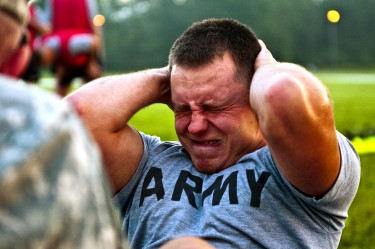
U.S. Army
Beyond the obvious weight loss and cardiovascular benefits of regular fitness, here are a few bonus consequences of working on your body:
- Your skin improves. If vanity is your top goal for getting in shape, I’ve got good news: Regular exercise, particularly when coupled with a healthy diet, does wonders to your hue. If you’re white and pasty like me, your skin starts glowing the longer you work out. It looks healthy, full of color, slightly tan. The reason: “Exercise enhances blood flow to skin,” says Dr. David Katz. Plus, sweating works as a natural cleaning agent, unclogging pores and removing oil and dirt for fewer zits. My skin has never looked healthier. What a pleasant surprise. Continue reading…
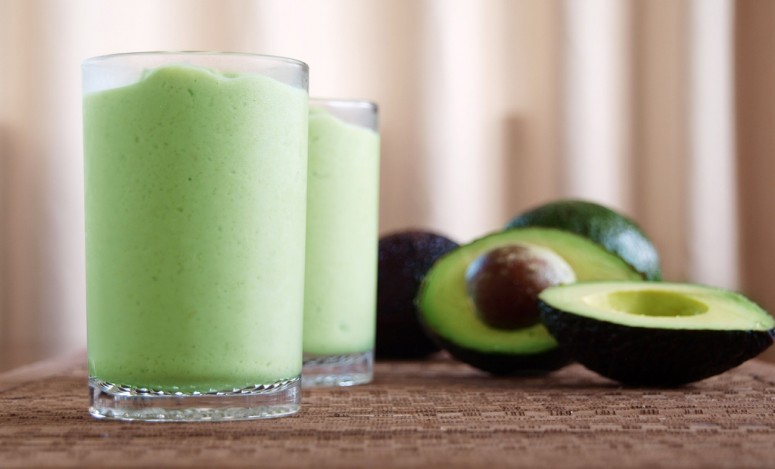
Ang Sarap
Like many of you, I go through food phases. Here’s what I’m particularly keen on eating, making, and cooking right now: Continue reading…
 If there’s one certainty I’ve observed in life, it is this: Rather than just eating more produce, less meat, and smaller portions of food, humans will vilify something in an effort to simplify complex food choices. Instead of accepting a “moderation in all things” approach to life — which limits superiority complexes and indulgence — they insist on inventing artificial food guidelines to live by.
If there’s one certainty I’ve observed in life, it is this: Rather than just eating more produce, less meat, and smaller portions of food, humans will vilify something in an effort to simplify complex food choices. Instead of accepting a “moderation in all things” approach to life — which limits superiority complexes and indulgence — they insist on inventing artificial food guidelines to live by.
For example: In the ’80s, butter and natual sugar was bad, so Americans (at least) ate lots of margarine and artificial sweeteners. But those turned out to be worse, so now butter and sugar are back on the menu. In the ’90s, it was the low-fat diet, which in many ways still influences our culture, although not to the extent the diet did in its hey day. In the 2000s, it was low-carbs: Atkin’s diet, South Beach, and other variations. Nowadays, popular grains like wheat bread, oats, and barley are suddenly the enemy. Even though we’ve been eating gluten for thousands of years, it’s just as bad for us as other fad diets. Which is to say it’s not.
Continue reading…
Hey, you. Yeah, you—the one reading this. The one that says ignorant things like “I’ll sleep when I’m dead,” “I’m busier than you,” or “I only require 3-4 hours of sleep.”
This research by Harvard obviously doesn’t apply to you, because you’re the exception in life. You’re superhuman.
For the rest of us, the study is a convincing reminder of mortality. Not only convincing, but alarming.
Continue reading…

My wife looked at me with bright amber eyes the other day and laughed in my face. “Is no hobby off limits for you?” she mused.
We were cleaning our attic and going through an old box of mine. It was a veritable time capsule of previous hobbies I once held dear. The one that made Lindsey laugh most were my magic tricks.
“How much did you spend on these?” she asked. “A few hundred,” I responded. “Let me guess, you only played with them for a few weeks,” she countered.
Probably.
You see, I lose interest in hobbies as quickly as I discover them. I do have lifelong passions—music and sports chief among them. But most of my hobbies are fleeting. I get what I need and then move on to new hobbies. The old ones remain as slice of my former self; a talking point with anyone who has shared my enthusiasm for x, y, or z.
But it’s not out of boredom that I lose interest in hobbies. It’s out of a desire to experience as many things as I can. Someday I’ll list a comprehensive set of passions that I chased in this life. But for now, here are personal hobbies I’m particularly keen on at the moment: Continue reading…
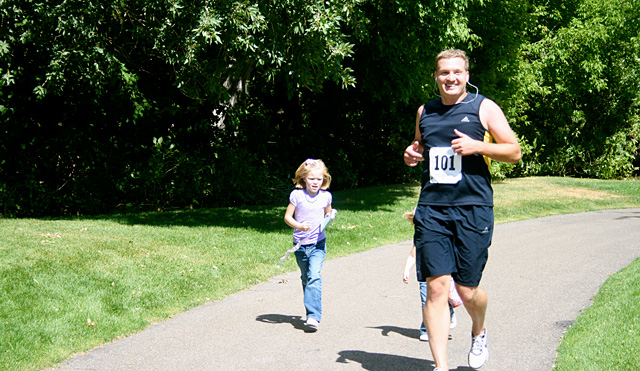 If you’re happy with your health, nutrition and self-image, skip to the next post. If not, read on.
If you’re happy with your health, nutrition and self-image, skip to the next post. If not, read on.
In nine years of marriage, Lindsey and I have never owned a weight scale. Not one.
Why? Because they’re superficial, largely meaningless, and a lousy motivator of long-term health. Continue reading…

Healthy food prolongs life. Junk food taketh away.
Here are 12 simple rules for healthy, happy eating, taken from Karen Le Billon’s French Kids Eat Everything, my own experience with food, and the good old Word of Wisdom (as validated by nearly 200 years of good health and a recent UCLA study).
- Always read the label. You are in charge of educating yourself on what you digest. When in doubt, pick food with the fewest included ingredients and artificial-sounding names (like xanthum gum)
- Avoid emotional eating. No food rewards, bribes for kids, or eating out of boredom or depression. Hard to do. Brushing your teeth can help. So can striking up a conversation with someone to take your mind off food.
- Avoid short-order or otherwise “fast” food. With exception to simple meals like bread and cheese, food that is fast (snacks, microwavable, drive-though etc) is usually filled with unnatural preservatives and additives that dilute the nutritional value of the food you consume. Continue reading…
Because they’re constantly chaperoning 120 players, “most of them 18-22 years of age,” reports the Associated Press:
Joker Phillips is 47 and in his first season as Kentucky’s head coach after 20 years as an assistant. He said he has made sure to keep good habits despite the demands of the job. “I still work out every day. I still get the same amount of sleep. I just think this game is important to me, but my family and personal health is more important,” he said. “I am a competitor and I do want to win, but I’m not going to let this game ruin my life.”

Sound advice.
I like running.
With exception to an injury hiatus, I ran several times a week over the past two years. And since reading Born To Run, I do so enthusiastically (not begrudgingly like I once did).
I normally run continuously for 45 minutes to an hour. On occasion, two hours—whatever I feel like really. I don’t time myself or track miles—an act that makes running feel like work—I just run.
Two weeks ago, I was feeling especially light on my feet. When I left the house on an empty stomach that Saturday, I didn’t plan on running for three plus hours, but I did. I also didn’t take water or food with me, and nearly put myself in the hospital as a result.
Continue reading…
At the recommendation of my surgeon, I started doing calisthenics this week in an effort to stretch my healing back and start building my core (so my lower discs don’t have to work so hard). I also need to lose more weight — I currently weigh 212 lbs. Not so fun fact: I weighed 185 at my wedding five years ago. But I digress.
After almost three months of atrophy, I’m amazed how quickly the human body becomes unfit. I’m breathing like crazy after only 10 push ups, whereas three months ago I was in the best shape I’ve been since high school. But I must say, the stretching and light work outs alleviate the lingering pain in my leg caused by a once flattened sciatic nerve. Is nice!
I’m anxious to get back to running, but have to wait another month before doing so. So have you been exercising? Tsk, tsk.

This is an oldie but goodie entitled The Perfect Human, courtesy of Wired.
Dean Karnazes ran 50 marathons in 50 days. He does 200 miles just for fun. He’ll race in 120-degree heat. Here are 12 secrets to his success.
Reading this article back in January 2007 was one of the reasons I took an interest in running.
I ruptured a disc in my lower back on July 4. I successfully ran a 10K that day, but the spine cushion (as it is called) blew due to genetics, not physical exertion, I’m told. The demanding event and requisite training only aggravated an already degenerative disc.
On Friday, I had a discectomy to cure the problem, which slices through my back, drills a hole in my vertebrae, and traverses the sacred spinal canal to remove the loose fragment that was pinning my sciatic nerve against my bone, causing pain throughout my entire right leg.
Continue reading…





 After recently learning that a family member was suffering from an eating disorder, I read
After recently learning that a family member was suffering from an eating disorder, I read 



 In January, my wife bought this
In January, my wife bought this 

 Days before America went on coronavirus quarantine this spring, Time Magazine
Days before America went on coronavirus quarantine this spring, Time Magazine 

 This week many world and local leaders hit the nuclear response button to a pervasive, flu-like virus that kills a lot of old people and around 10 times the number as the common flu, according to the latest figures.
This week many world and local leaders hit the nuclear response button to a pervasive, flu-like virus that kills a lot of old people and around 10 times the number as the common flu, according to the latest figures.
 The following was written
The following was written 
 Not only is 2020 the start of a new year, it’s the start of a new “roaring twenties” (hopefully one that doesn’t end in another Great Depression). That’s exciting–the new decade part, not depression.
Not only is 2020 the start of a new year, it’s the start of a new “roaring twenties” (hopefully one that doesn’t end in another Great Depression). That’s exciting–the new decade part, not depression.
 Get happy yourself. How happy you are dramatically affects how happy and successful your kids are. So plan time each week to nurture your own relationships and hobbies.
Get happy yourself. How happy you are dramatically affects how happy and successful your kids are. So plan time each week to nurture your own relationships and hobbies.


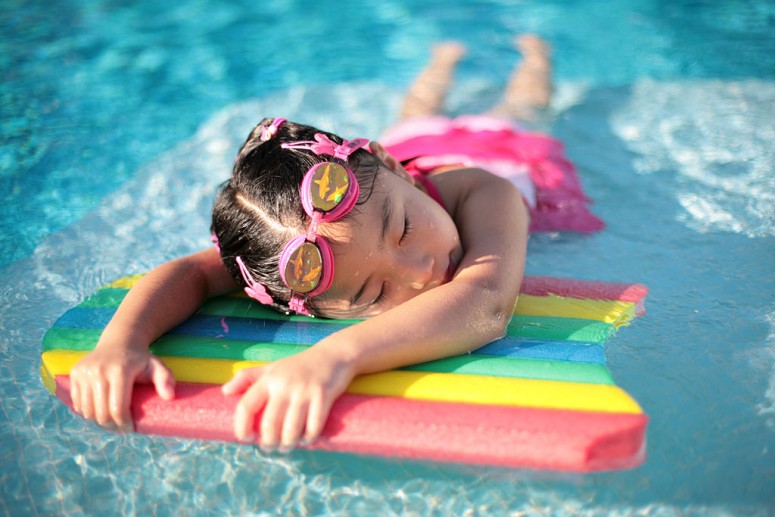

 I’m grateful to my parents for teaching me basic personal hygiene. Things like regular bathing, brushing teeth, grooming, laundry, and hand-washing.
I’m grateful to my parents for teaching me basic personal hygiene. Things like regular bathing, brushing teeth, grooming, laundry, and hand-washing.












 If you’re happy with your health, nutrition and self-image, skip to the next post. If not, read on.
If you’re happy with your health, nutrition and self-image, skip to the next post. If not, read on. 

